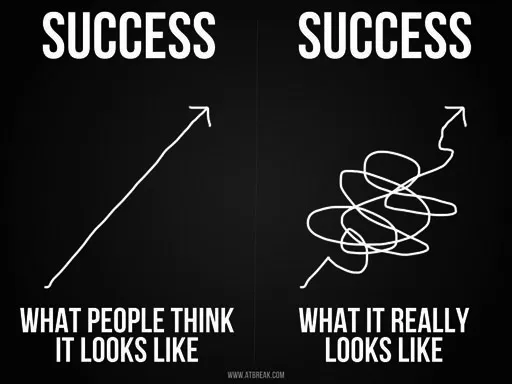![]()
Part I
What we know about entrepreneurs and entrepreneurship
The five chapters that constitute the first part of the book present the four most common myths about entrepreneurship and the associated and pragmatic questions that hold individuals back from starting a new venture—namely, “I don’t have an idea, the money, I’m afraid to fail and I don’t know where to start.” These fears arise from misconceptions similar to those ascribed to the pioneering explorers who set sail on the open seas several hundred years ago. History has stylized these early adventurers as visionary heroes, possessing superhuman abilities and extraordinary luck. In fact, the process of drawing the map of the world is similar to the process an entrepreneur employs in starting a new venture. Both explorers and entrepreneurs do what they can with the things they have available. Both embrace surprise as an asset. And both create new maps that define our world for generations to come. We encourage you to look past the glamorous retelling of entrepreneurial lore and instead focus on the systematic principles that experts follow—principles detailed in this book that you can apply yourself as you create your own map.
Hold up a mirror and ask yourself what you are capable of doing, and what you really care about. Then take the initiative—don’t wait for someone else to ask you to act.
Sylvia Earle
![]()
Chapter 1
Popular mythology around entrepreneurship has created a number of barriers that hold people back from becoming entrepreneurs.
Most of them are not true.
Roadmaps, myths, and the Bahamas
IN THIS CHAPTER:
■ The mythical entrepreneur
■ The fairy tale journey
■ The common entrepreneur
If you are reading this, you are most likely looking for a roadmap to success. You are, of course, not alone. Most human beings whose basic needs are satisfied share this quest with you. Each may define success differently. For some it may be to make a meaningful difference in the world, for others it may be power and fame and for yet others it might simply be independence, dignity, and the opportunity to achieve the creative potential within themselves. And perhaps, make oodles of money in the process.
There are probably as many ways to define and achieve success as there are human beings. However you define success, the principles of entrepreneurship you’ll learn in this book can help you achieve it, for entrepreneurship is about the very creation of new roadmaps, not only for you but also for a subset of humanity around you.
As you read this book, we encourage you to actively consider your own roadmap. Yours may be based on existing paths that work well or new ones that reshape the terrain and perhaps even make new worlds altogether.
Regardless, we hope you are prepared for an adventure of mind-bending possibilities rooted in street-smart realities, all culled from rigorous academic research.
The Mythical Entrepreneur
Entrepreneurs are heroes of our times. Jeff Bezos, Sachin Bansal, and Richard Branson are seen as the daring visionaries of our business culture—conquering new markets, thriving on risk, and pursuing opportunities others simply could not see.
The Fairy Tale Journey
How do they do it? Let’s begin by sketching out the roadmap generally ascribed to the mythical entrepreneur:
- Searches for a “new, highpotential” opportunity.
- In a lightbulb moment, discovers something nobody has thought of before.
- Writes a business plan.
- Raises lots of investment money—especially from venture capitalists (VCs).
- Hires a great team.
- Builds a product.
- Orchestrates a big launch.
- Achieves steady, or better yet, hockey-stick growth.
- Sells the venture or has an initial public offering.
- … and, finally, retires to the Bahamas.
This all sounds great, but there’s a problem: when we look at the startup histories of companies and the biographies of the entrepreneurs who founded them, this roadmap has no bearing on their actual course.
Consider just a few data points along this journey. One academic study found that only 28% of a sample of Inc. 500 firms had completed a formal business plan (Bhidé, 2000). More than 73% of Initial Public Offerings (IPOs) are not funded by VCs (Gompers and Lerner, 2001: 145), and the average amount of money it takes to create a business in the US is less than $30,000 (Kaufmann Foundation, 2009).
These and other data suggest that the mythical entrepreneur’s roadmap is a fantasy. But if many great entrepreneurial stories don’t involve business plans and huge venture capital investments, how do entrepreneurs actually create enduring companies? For the past 15 years or so, we, along with many collaborators around the world, have been engaged in research to answer that question and identify specific techniques people actually use to create new firms. The results of our investigations point to the principles detailed in this book. The results challenge us to rethink several key issues about how great entrepreneurship happens. The core insight is that anyone who wants to be an entrepreneur can (learn to) be an entrepreneur.
The Common Entrepreneur
Let’s put Richard Branson and the popular media aside for a moment and reconsider the waypoints on our fantasy path to success. As we examine each, see if you can begin to diagram the real entrepreneurial journey.
Search or divine inspiration
Our path started with an entrepreneur searching for an opportunity and having a lightbulb moment. Which means that the opportunity could be found by anyone smart enough or alert enough. It means our mythical entrepreneur’s clients would recognize the solution when she presented it to them. It also means that our entrepreneur could assess the value of and risks in the opportunity when she discovered it. But imagine trying to predict the returns of creating a new “airline we hope you love” in an industry which has been notoriously unprofitable? Of putting a bookstore online in 1990? Or, of then trying to challenge that unexpectedly successful bookstore in India in 2007?
Only with the benefit of hindsight, Virgin Air, Amazon, Flipkart, and countless others appear brilliant and inevitable. Only with the benefit of hindsight is it also possible to distinguish those successful businesses from some equally spectacular failures, such as Pets.com or the Internet currency, Flooz.
Furthermore, as you will discover in Chapter 2, there is little magic in the initial idea anyway. Ideas are cheap and plentiful. And because most ventures start with an idea that has little relation to the company which subsequently emerges, success is in the active perspiration, not the divine inspiration. In reality, many companies you know are based on ideas that were co-created by the entrepreneur and her partners— ideas not anticipated when the entrepreneur started the venture and might have looked dubious in the form of an initial business plan.
What is Entrepreneurship, Really?
One issue that has caused a lot of debate among entrepreneurship researchers over the years is the question of what entrepreneurship is, really. If you do it, what are you doing? And if you study it, what are you studying? What is the central phenomenon? Though this issue may seem silly, it isn’t atypical; it turns out that biologists have a surprisingly hard time defining “life” and physicists have a hard time agreeing on what “matter” really is. Perhaps understandably then scholars have had some difficulty defining precisely what entrepreneurship is, and isn’t.
One way to tackle the question of what entrepreneurship is (really) is to focus on the activities entrepreneurs engage in, i.e. what entrepreneurs do. We take this approach in this textbook. The emphasis is on the actions and behaviors of entrepreneurs. One key entrepreneurial activity is creating new ventures. Other key activities include developing new markets, discovering and creating opportunities and entrepreneurship inside corporations.
An important implication of defining entrepreneurship in terms of activities is that it shifts the focus away from seeing entrepreneurs as special people with particular personality characteristics. Instead, we foc...



